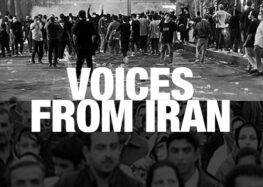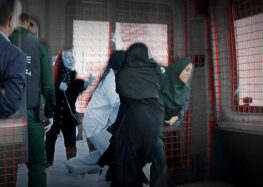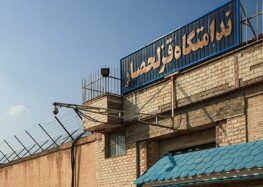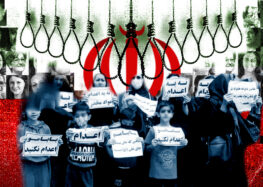Rising COVID Infections, Unhygienic Conditions Raise Fears of More Deaths in Iranian Prisons
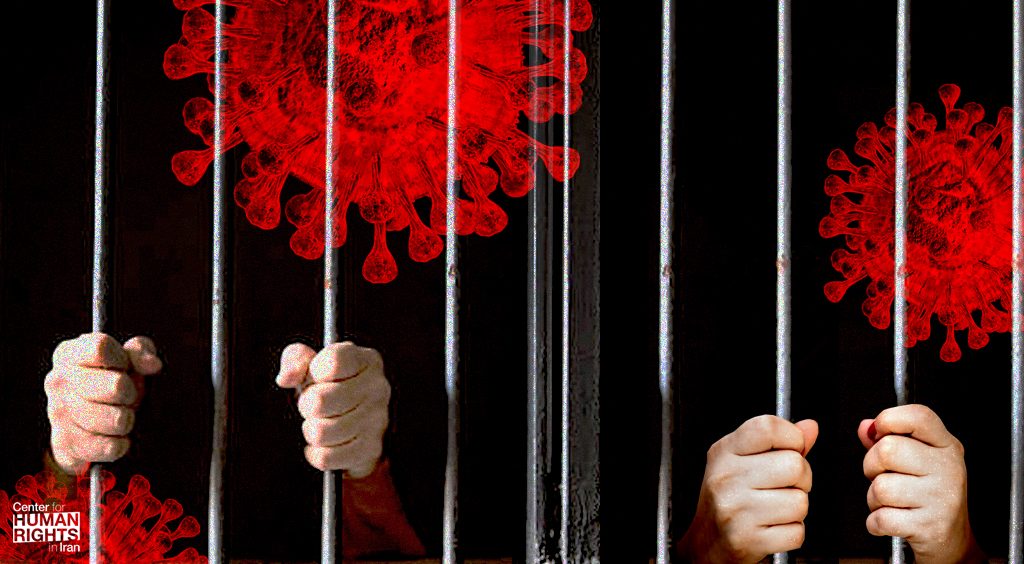 The start of a fifth COVID-19 wave in Iran, amidst national water and electricity shortages and unhygienic prison conditions, has greatly increased the risks of outbreaks among prisoners, some of whom have died and a growing number of whom are testing positive for the virus.
The start of a fifth COVID-19 wave in Iran, amidst national water and electricity shortages and unhygienic prison conditions, has greatly increased the risks of outbreaks among prisoners, some of whom have died and a growing number of whom are testing positive for the virus.
In an audio message recorded in Tehran’s Evin Prison and shared on Twitter on July 17, 2021, Aliyeh Motallebzadeh, a women’s rights activist, said the authorities were doing nothing to ensure prisoners’ safety.
“The deputy prison director came by and I told him, ‘It looks like you have thrown the prisoners behind closed doors so they could all die together,’” said Motallebzadeh in the message.
“Very casually he replied, ‘It’s the same outside. People are dying outside, too. There’s no difference. You die, too.’”
The Iranian judiciary’s unverifiable claim that more than 100,000 prisoners were granted furlough or released on bail in the past year amid the pandemic overshadowed the fact that most political prisoners were excluded from the release.
Many political prisoners are now exposed to dangerous conditions amidst a record number of COVID-19 infections and fatalities in the country.
As an arm of the judiciary directly responsible for protecting prisoners’ health, the State Prisons Organization has been unlawfully endangering the lives of the prison population by failing to maintain sanitary conditions and providing inadequate medical services.
“The prison authorities have this idea that prisoners should not live like normal people,” Reza Khandan, an activist and the husband of prominent imprisoned rights lawyer Nasrin Sotoudeh who’s held in Gharchak Prison, told the Center for Human Rights in Iran (CHRI).
“They think greater punishments and suffering is part of the sentence. But prison sentences do not require added hardship during imprisonment,” he added. “Gharchak lacks even the most basic hygienic facilities, and has lower standards than the criteria set by the prison organization itself.”
Sotoudeh, who is serving a 12-year prison sentence for representing activists and dissidents and peacefully advocating human rights, was released on a five-day medical furlough on July 21.
That same day, activists reported that some prisoners in Tehran’s Evin Prison’s Women’s Ward had been quarantined after testing positive for COVID-19, including Nahid Taghavi, a German-Iranian national awaiting sentencing on undisclosed national security charges, and Maryam Samghani, a political prisoner.
Saeid Janfada, the head of the State Prisons Organization in Khorasan Razavi Province, revealed on June 27 that “about nine” prisoners had died of COVID-19 in the province during the past Iranian year (ended March 20, 2021), raising fears among activists of more deadly outbreaks to come.
The inhumane living conditions in prisons throughout the country, particularly Gharchak Prison located south of the capital, and the Greater Tehran Central Penitentiary (GTCP), as well as in jails and detention centers in smaller cities, have increased concerns of more deadly breakouts.
“When we went to Gharchak to visit Nasrin three weeks ago… there was nothing to disinfect the phones,” Khandan told CHRI. “We could have given some of our disinfectant liquid to Nasrin, but the authorities did not allow it and ultimately we weren’t able to speak to her.”
“All the prisons have a policy that prisoners can buy their own hygiene products depending on what they can afford,” added Khandan. “But that’s not the case in Gharchak and the GTCP, where the authorities refuse to let prisoners improve hygiene even with their own resources.”
Khandan told CHRI that Gharchak was originally a warehouse for dairy livestock and that the authorities had turned it into a prison without implementing proper infrastructure and protocols to keep prisoners safe.
“Nothing was done to upgrade the facilities from a warehouse for animals to a prison for humans, such as the installation of an air circulation system or basic hygienic services,” he said.
“Lack of access to clean water has become a fundamental challenge and a terrible human disaster in prisons like Gharchak in remote parts of the country,” said Khandan.
“The buildings have been designed without any thought put into suitable locations for the toilets, which are so filthy that they cannot be cleaned anymore. They have to be destroyed and rebuilt.”
In an open letter written in Gharchak on March 10, Sotoudeh called for the facility’s closure “because of its sub-standard and inhuman conditions and the construction.”
“The first thing to consider when constructing a prison is having suitable water and weather,” she wrote. “This prison, on the other hand, has no clean water or any weather suitable enough to breathe. The tottering interior space of the prison is very compressed and tight, with low ceilings and no windows or suitable ventilation, creating an inhuman situation.”
Read this article in Persian.
Persian Translation: WHO Guidance on Protecting Prison Populations from COVID-19
Persian Translation: UN Guidance on Protecting People with Disabilities from COVID-19

